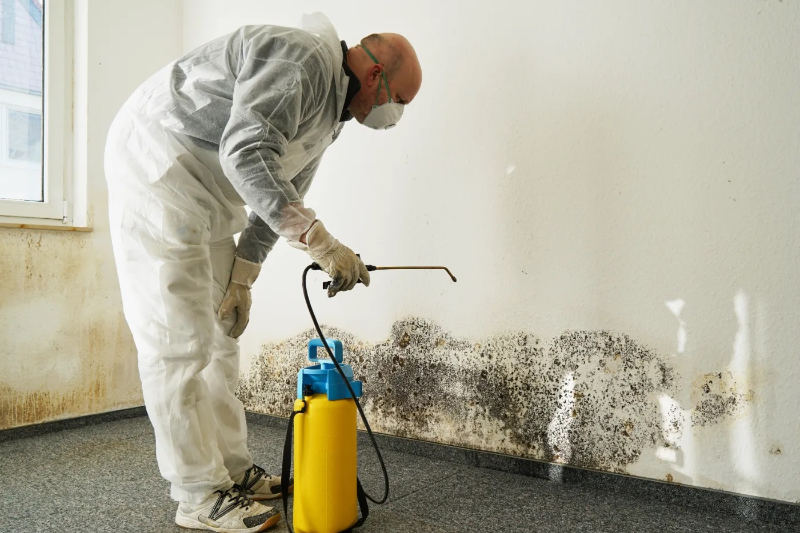How To Remove Stains From Walls

Table Of Contents
Maintaining a pristine living space is a goal we all aspire to achieve, and one of the first things that catches the eye is the state of our walls. Clean, well-painted walls can instantly elevate the aesthetics of any room, but what do you do when those unsightly stains threaten to mar the beauty of your home? Worry not, for this blog post is here to guide you in the art of stain removal for your walls.
Whether you're dealing with the aftermath of a coffee mishap, fingerprints from little explorers, or stubborn marks that seem to have taken permanent residence on your walls, this comprehensive guide will equip you with the knowledge and techniques needed to restore your walls to their former glory.
We'll delve into the wonders of warm water, explore the nuances of cleaning painted walls, and unveil the secrets to achieving flawlessly painted stain-free walls. Say farewell to those stubborn blemishes and hello to a refreshed living space! Read on to learn more!
A Guide on How to Remove Wall Stains

Preparation
Before embarking on your journey to remove stains from your walls, it's crucial to be well-prepared. Proper preparation ensures a smoother stain removal process and minimizes the likelihood of causing further damage to your walls or harm to yourself.
Here's what you need to do:
Gathering necessary tools and materials
You'll need essential tools and materials to remove stains from your walls successfully. These may include:
- Clean, soft cloths or sponges: These will be used for cleaning.
- Bucket: To hold your cleaning solution.
- Warm water: A staple for most stain removal tasks.
- Mild detergent: Choose a gentle, pH-balanced detergent to avoid damaging the paint.
- White vinegar: Effective for removing stains, especially mold and mildew.
- Baking soda: Useful for tougher stains and grease.
- Soft-bristle brush: Helpful for scrubbing without scratching the paint.
- Painter's tape: To protect areas you don't want to clean or paint.
- Putty knife or scraper: For gently removing dried or crusty stains.
Identifying the type of paint or finish on your walls
Knowing the type of paint or finish on your walls is essential because it dictates the cleaning method you should use. Standard wall finishes include flat, satin, semi-gloss, and gloss.
Here's how to identify the finish:
- Flat finish: It has a matte appearance and doesn't reflect much light.
- Satin finish: It has a slight sheen and is relatively easy to clean.
- Semi-gloss finish: It has a noticeable shine and is more washable.
- Gloss finish: It's highly reflective and the most washable.
Check your paint can or any documentation from when your walls were painted for information on the finish. If unavailable, do a spot test in an inconspicuous area to determine how the paint reacts to cleaning solutions.
Taking safety precautions
Safety should be your top priority during the stain removal process. Here are some essential precautions to keep in mind:
- Ventilation: Ensure good ventilation by opening windows or using fans to prevent inhaling fumes from cleaning products.
- Protective gear: Consider wearing gloves, safety goggles, and a mask to shield yourself from any potential splashes or fumes.
- Children and pets: Keep children and pets away from the area you're cleaning to avoid accidents or exposure to cleaning chemicals.
Methods for stain removal
Now that you're armed with the necessary tools and materials, let's dive into the specific methods for removing various types of stains from your walls. Stains can come in many forms, but we've got you covered with practical solutions for each:
Water-based stains
Common water-based stains include those left behind by beverages like coffee and tea. These stains may seem daunting, but with the right approach, they can be eradicated.
How to remove common water-based stains (e.g., coffee, tea)
Water-based stains are best addressed with a gentle touch. Follow these steps:
- Blot the stain gently using a clean, dry cloth or paper towel to absorb as much liquid as possible.
- Dilute a mild detergent with warm water in a bucket, creating a soapy solution.
- Dip a soft microfibre cloth or sponge into the soapy water and wring it out until it's damp, not dripping wet.
- Gently blot the stained area, moving from the outer edges of the stain toward the center to prevent spreading.
- Wipe the area thoroughly with a clean, damp cloth.
- Pat the wall dry with another clean cloth.
Oil-based stains
Due to their composition, oil-based stains, such as grease and crayon marks, require a different approach.
How to tackle oil-based stains (e.g., grease, crayon)
Oil-based stains can be stubborn, but you can conquer them by doing the following:
- Scrape off any excess oil or crayon using a putty knife or scraper.
- Make a smooth paste using bicarbonate of soda and water.
- Apply the bicarb and water paste to the stain and gently rub it in with a soft cloth or sponge.
- Let it sit for a few minutes.
- Wipe away any leftover paste with a damp cloth.
- If the stain persists, try a mixture of white vinegar and water (1:1 ratio) and repeat the process.
Special considerations for oil-based stains
- Avoid using highly abrasive materials that could damage the paint.
- Ensure thorough rinsing to remove any residue.
Mold and mildew stains
Mold and mildew stains not only mar the appearance of your walls but also pose health risks.
Identifying and addressing mold and mildew issues
- Identify the source of moisture and promptly address it to prevent future mold growth.
- Wear personal protective gear, including a mask and gloves, when dealing with mold.
- Mix a solution of water, white vinegar (1:1 ratio), or hydrogen peroxide (3%) in a spray bottle.
- Spray the stained wall section and allow it to sit for 10-15 minutes.
- Scrub the stained area gently with a soft-bristle brush.
- Rinse with clean water and dry thoroughly.
Safe mold and mildew stain removal techniques
- Proper ventilation is crucial when dealing with mold and mildew.
- Ensure the area remains dry to prevent future mold growth.
Tough stains
Tough stains, like those from permanent markers, require extra attention.
Dealing with stubborn stains (e.g., permanent markers)
- Test a small, inconspicuous area with rubbing alcohol to ensure it won't harm the paint. Gently rub the stained wall section with a cloth soaked in rubbing alcohol.
- Use a magic or cleaning eraser or a melamine foam sponge to remove the stain if needed.
- Rinse the section of the stained wall with clean water and pat it dry.
Tips for effective stain removal
- Always start with the gentlest cleaning method and gradually escalate if necessary.
- Be cautious with abrasive materials, as they can damage the paint.
General Wall Cleaning and Maintenance
Your efforts to remove stains from your walls will be most effective when coupled with a proactive approach to wall cleaning and maintenance. Let's explore the critical aspects of maintaining clean, stain-free walls:

Regular cleaning routines to prevent future stains
- Dust and Cobweb Removal: Dust and cobwebs can accumulate over time, making your walls look dingy. Use a soft duster or an extendable wand to regularly remove dust and cobwebs from high and low areas.
- Weekly Wiping: Incorporate a weekly wall-wiping routine using a microfiber cloth or a dusting pad. This helps prevent the pre-buildup of dirt and grime.
- Spot Cleaning: Address spills and stains promptly to prevent them from becoming permanent. Blot spills with a clean cloth and follow the appropriate stain removal method for the substance involved.
Proper maintenance for different wall finishes
- Flat Finish Walls: These are the most challenging to clean, so being gentle is essential. Use mild, soapy water and a soft microfibre cloth for cleaning. Avoid abrasive sponges or harsh chemicals, as they can damage the finish.
- Satin Finish Walls: Satin finishes are relatively easy to clean. Use a diluted mixture of detergent and water for routine cleaning. Wipe gently to avoid dulling the sheen.
- Semi-Gloss and Gloss Finish Walls: These finishes are more durable and washable. You can use a slightly stronger cleaning detergent, but avoid abrasive materials to prevent scratching.
Tips for keeping your walls looking fresh and stain-free
- Use Paint with Stain-Resistant Properties: When painting or repainting your walls, consider using paint specifically designed to resist stains. These paints have advanced formulas that make cleaning easier.
- Implement Protective Measures: In high-traffic areas or places prone to stains (like kitchen backsplashes), use protective measures such as splashbacks, wall coverings, or wainscoting to minimize direct contact with the wall.
- Regularly Inspect for Mold and Mildew: Periodically inspect your walls, especially in areas with high humidity, for signs of mold and mildew. Early detection allows for prompt action to prevent extensive damage.
- Touch-Up Paint: Keep a small supply of your wall paint for touch-ups. This lets you quickly fix minor scuffs and stains before they become noticeable.
- Maintain a Consistent Humidity Level: Fluctuations in humidity can contribute to mold and mildew growth. Utilize a dehumidifier in damp areas and ensure proper ventilation.
- Protect Walls from Sunlight: Direct sunlight can cause paint to fade over time. Consider the use of curtains or blinds to shield your walls from prolonged exposure to sunlight.
Removing Stains from Walls May Require Experts
Remember that the key to successful stain removal is patience, meticulous preparation, and appropriate cleaning methods. Additionally, regular maintenance and proactive measures are equally vital to preserve the freshness and spotlessness of your walls.
If you ever feel overwhelmed by the task of stain removal or simply prefer to leave it to the experts, seek assistance from professional cleaning services. Their expertise and specialized equipment can guarantee that your walls are impeccably maintained, whether it's a matter of cleaning walls or even helping you paint walls for a fresh start.
Embark on your journey towards flawlessly maintained walls by contacting a trusted cleaning service provider today. Elevate your living space and relish the peace of mind accompanying a clean, welcoming home. Your walls will undoubtedly express their gratitude!
